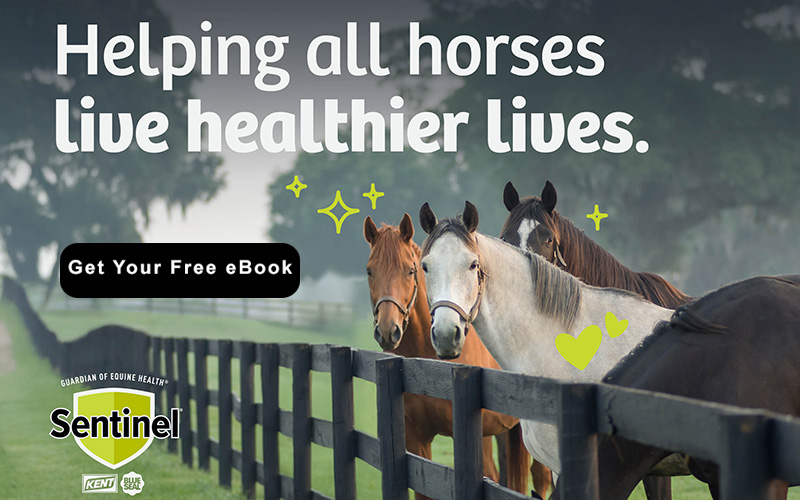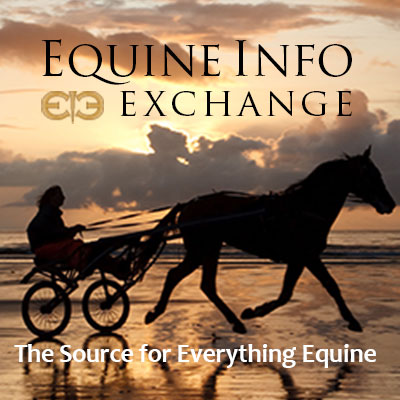Health & Education
We all want the best care possible for our horses. The Heath & Education section covers both Learning Institutions, Organizations as well as many sources for equine assistance including Veterinarians and Farriers.
For those who want a to formally study horses, the Education section includes College Riding, Equine Studies, and Veterinary Schools. Learn about the wide variety of horses in the Horse Breeds section. Supplements and Treatments Therapy are also included in the section.
Everyone can learn from Fine Art and there are some specialty Museums that might surprise you.
Horses as a therapy partner enrich the lives of the disabled. These facilities are listed in our Therapeutic Riding section. To help children and young adults build confidence and grow emotionally, please see the resources available on the Youth Outreach page.
Looking for a place to keep your horse? You can find it in the Horse Boarding section. Traveling? Find a Shipping company or Horse Sitting service if your horse is staying home!
Want to stay up to date with the latest training clinics or professional conferences? Take a look at our Calendar of Events for Health & Education for the dates and locations of upcoming events.
Do we need to add more? Please use the useful feedback link and let us know!
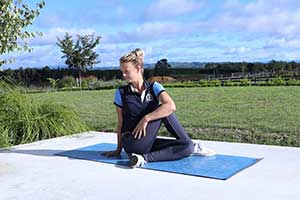
by Dressage Rider Training
In this article, I will run through rider back stretches and hip mobility work to help release lower back and hip pain in riders.
The human body has this amazing ability to heal itself. At any age and in nearly any state especially when given the right environment to do so. Our body will put up with a huge amount of silly movement and poor lifestyle choices for a long time because we have a large amount of functional tolerance built into us.
However we shouldn’t abuse this high tolerance and instead, we should ensure we listen and take care of our body on a daily basis. Because those little signs and symptoms that do appear can turn into bigger uglier problems later on if not taken care of. Just as a tree moulds to its environment over the years from the different weather patterns, so too does our body.
So if that environment is creating niggles and imbalances, which you ignore and only fix the symptoms, it could continue to be an issue for much longer. So given that we have this amazing body that can repair and heal itself with the right tools and environment it makes sense that we would want to pay attention to both areas when aiming to improve our rider wellbeing.
These rider back stretches and exercises are designed to help relieve lower back or hip pain, which is an incredibly common problem and often created because of the environment our bodies are placed in each and every day. So as much you want to do these stretches, pay attention to other possible changes you can make to your daily life. Such as when we sit this can be for long durations at a time and this can cause tightness in our hamstrings, shoulders, hip flexors, and compression in our lower back. To combat this, consider adding in more standing and walking into your day. Try this, for every 30 minutes of sitting you do per day, aim to do 2 minutes of walking or aim to spend 50% of your day on your feet, be it with a stand-up desk or walking meetings.
Read more: 12 Stretches to Release Lower Back and Hip Pain In Riders
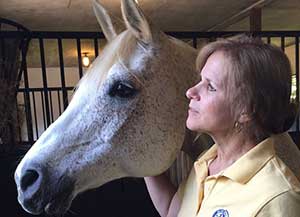
by Jen Roytz
We’ve all heard the saying “You can lead a horse to water, but you can’t make them drink.” Horses have to be thirsty in order to consume water, and the lynchpin in that scenario is salt.
Dehydration in horses–or any animal–can quickly escalate from mild to catastrophic. Their internal environment is water-based, and salt is the driving force behind the regulation and distribution of water in and out of cells.
“Salt is 39% sodium and 61% chloride. When consumed, salt will split in the body into the separate minerals to be used independently (as electrolytes),” said Dr. Kathleen Crandell, PhD, a nutritionist with Kentucky Equine Research (KER). “Both these minerals have independent roles in the body, but mainly they work together balancing fluid movement in and out of the cells and acid-base balance, as well as electrical impulse conduction in nerves and muscles. Further, sodium is needed for transport of substances across cell membranes, like glucose.”
The more a horse exercises and sweats, the more water they need to consume to prevent dehydration, and as such the more salt they require in their diet. While forage, grass and concentrated feeds contain salt, it is not enough to adequately meet a horse’s dietary needs, especially a high-performance equine athlete, such as a racehorse, making proper salt supplementation key.
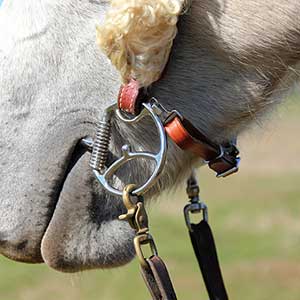
A Kansas State University associate professor and a Toklat and Myler bit expert outline warning signs for horse owners.
While enjoying a ride with your best horse, she throws her head in frustration and pins her ears. You chalk it up as an off day, one of many as of late, but it could be much more than that. “It is important to understand what the bit is doing and what to watch for,” cautions Chris Blevins, MS, DVM, Associate Professor, Equine Field Service with Kansas State University. “It is our responsibility to keep our horses comfortable.”
If your horse is experiencing bit pain and discomfort, you may notice signs of bit resistance.
There are several signs of bit resistance,” says Judy Auble, with Toklat and Myler bits. “The best way to determine whether your horse needs a new bit is to pay attention to how your horse reacts to your rein action and rein pressure.”
Could it be time to change bits? Watch for these warning signs:
- Inverting, when horses ride with their muzzles held high
- Riding behind the vertical, as horses tuck their nose into the chest
- Gaping, when horses drop their jaws behind the vertical, relieving tongue pressure
- Running through the bit or being heavy on the bit
- Riding with their tongue out of the mouth
- Consistent throwing of head and pinning of ears
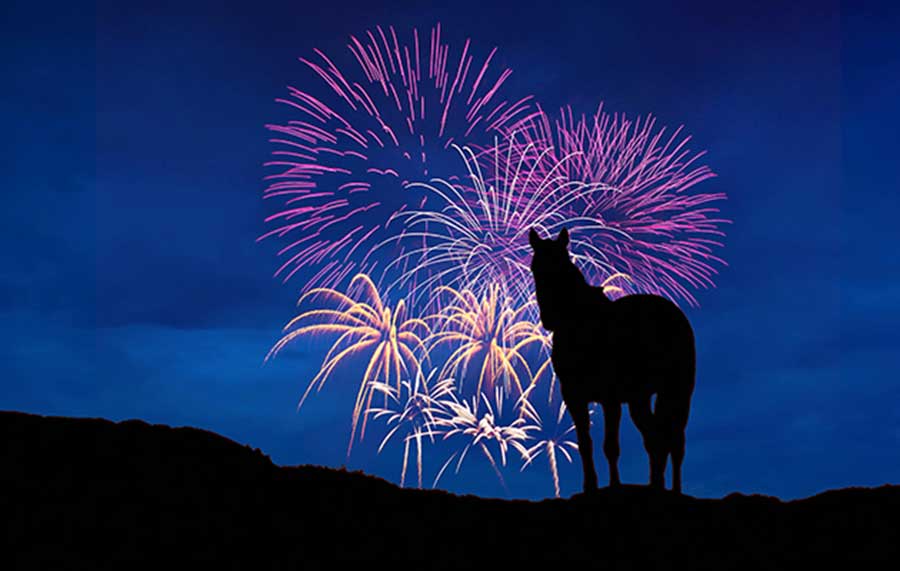
Implement these safety best practices to help celebrate Independence Day with the greatest display of all – a safe, injury-free horse.
Independence Day brings out patriotism, family fun and more than 200 million pounds of fireworks, according to the American Pyrotechnics Association.1
How does your horse react to fireworks?
In a recent horse owner survey, which examined the effects fireworks can have on horses, 99 percent of respondents indicated their horse exhibited fireworks-related anxiety – such as galloping, sweating, trembling and damaging fences – and 26 percent of horse owners reported their horse sustaining injuries due to such anxiety from fireworks.2 While multiple injuries were reported, the most common included cuts, sprains and broken limbs.
Maintain your horse’s health and safety. Before celebrating July Fourth, ask your veterinarian about prescribing a tube of Dormosedan Gel® (detomidine hydrochloride) for your horse.
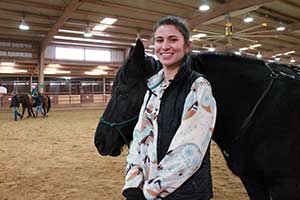
By Sarah Ross
In the last few decades, there have been many new advancements in treatment for children with disabilities, allowing them to explore a wide range of therapies for a variety of different physical, mental and emotional challenges. Hippotherapy, also known as horseback riding therapy, has been around for over a century in some form, but with the establishment of the American Hippotherapy Association in 1992, it has increased in popularity and become better known within the United States.
Therapists contend that equine therapies can address a variety of disabilities and ailments, from strengthening muscle groups and coordination due to the leg work needed to ride and guide a horse, to the mental discipline and emotional bonding that can help patients with mental illness, patients with addiction, or patients with behavioral or emotional concerns.
Colorado State University has partnered with My Heroes, a hippotherapy program out of Atlanta and Fort Collins, to help individual patients to meet their treatment goals through the use of therapy horses from the Temple Grandin Equine Center at the CSU Foothills Campus. The program also allows for CSU students to get involved with the therapies of local patients, giving them real-world experience in the field.
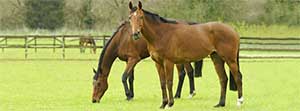
Horses are at the highest risk for contracting WNV during peak mosquito season, July through October. Ensure your horse is protected.
Heavy rainfall and floodwaters threaten the country's Heartland with heightened mosquito and West Nile virus (WNV) risk. With rising numbers of reported WNV cases, ensure you are aware of these 10 important WNV facts.
- Africa, Eastern Europe and West Asia have long experienced the impact of WNV; however, the disease is fairly recent to North America with the first case diagnosed in 1999.
- West Nile virus is transmitted by mosquitoes, which feed on infected birds, to horses, humans and other mammals.
- Horses represent 97 percent of all reported non-human mammalian cases of WNV disease.
- Infected horses begin to show signs of disease as early as three to 15 days.
- More than 25,000 cases of WNV have been reported in U.S. horses.
- The disease presents a 33 percent fatality rate to horses.
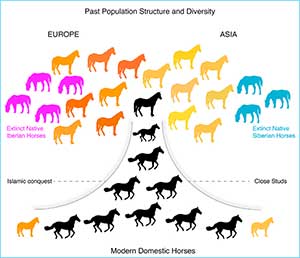
Authors Antoine Fages, Kristian Hanghøj, Naveed Khan, Alan K. Outram, Pablo Librado, Ludovic Orlando
In Brief
Genome-wide data from 278 ancient equids provide insights into how ancient equestrian civilizations managed, exchanged, and bred horses and indicate vast loss of genetic diversity as well as the existence of two extinct lineages of horses that failed to contribute to modern domestic animals.
Highlights
- Two now-extinct horse lineages lived in Iberia and Siberia some 5,000 years ago
- Iberian and Siberian horses contributed limited ancestry to modern domesticates
- Modern breeding practices were accompanied by a significant drop in genetic diversity

Authors Antoine Fages, Kristian Hanghøj, Naveed Khan, Alan K. Outram, Pablo Librado, Ludovic Orlando
In Brief
Genome-wide data from 278 ancient equids provide insights into how ancient equestrian civilizations managed, exchanged, and bred horses and indicate vast loss of genetic diversity as well as the existence of two extinct lineages of horses that failed to contribute to modern domestic animals.
Highlights
- Two now-extinct horse lineages lived in Iberia and Siberia some 5,000 years ago
- Iberian and Siberian horses contributed limited ancestry to modern domesticates
- Modern breeding practices were accompanied by a significant drop in genetic diversity
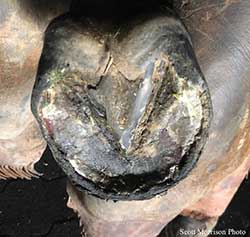
by Denise Steffanus
This year's wet weather and seemingly endless mud are wreaking havoc on horses' feet. Dr. Scott Morrison, head of the podiatry department at Rood & Riddle Equine Hospital in Lexington, Ky., said he has seen more cases of retracted soles this year than ever before. In addition to Kentucky, he is aware of cases in Virginia, Tennessee, and Indiana, and he suspects it is a problem in other parts of the country.
A retracted sole starts out with a thin sole. Then when the horse spends days or even weeks standing in mud while turned out, the sole weakens and the mud shoves it upward into the coffin bone, the main bone in the foot. This causes severe pain and lameness, eventually forming a large seroma (fluid-filled pocket) under the sole that can progress into a subsolar abscess or worse if untreated.
Horses with thin soles, predominantly Thoroughbreds, are most susceptible to retracted soles. Combine Kentucky's signature breed with its signature limestone-and-clay soil, and you have the perfect storm to create retracted soles.
Read more: With Wet Weather Comes A New Hoof Problem: Retracted Soles
- Tracking Five Millennia of Horse Management with Extensive Ancient Genome Time Series (Part 2 of 4)
- Tracking Five Millennia of Horse Management with Extensive Ancient Genome Time Series (Part 1 of 4)
- Breeding: Make Sure You Cover the Basics!
- Vitamin C – Friend or Foe?
- Disaster Preparation Tips for Horse Owners
- Mild Equine Asthma Can Distinguish Winners from Losers on the Racetrack
- The Academic Equestrian: 10 Horse Personality Types
- Equine Temperament: Nature, Nurture or Both?
- Incorporating Mindfulness: Game Changer for Horse & Rider
- The Influence of Rider:Horse Bodyweight Ratio
- Debbie Roberts Loucks: The Big Power of Small Changes
- Study Suggests An ‘Emotional Transfer’ Between Humans & Horses
- Can Horses Really Smell Fear? Yes, And That’s Not All
- Boy with Autism Forms Incredible Bond with Horse After Being Bullied in School
- Horses can be affected by Zika virus, study shows
- You Are Not Alone: Mental Health in Our Equestrian Community
- Are Equine Infectious Disease Outbreaks Preventable? Are We Doing Enough?
- Horse Power: Equine Therapy for ADHD
- Colorado Women in Ranching: A spirit of nurturing, sustainability is alive at San Juan Ranch
- Do You Dare to Go Bare?






